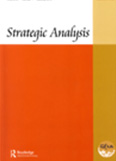Weapons Procurement: Qualitative Requirements and Transparency in Evaluation
Procurement of new weaponry and equipment for the armed forces is a long, complex and arduous process. Funds involved are enormous and the quality of equipment selected has a profound influence on national defence potential. Therefore, most countries have evolved elaborate procedures aimed at procuring the most appropriate equipment at affordable prices.
- Mrinal Suman
- October 2006
- Strategic Analysis








